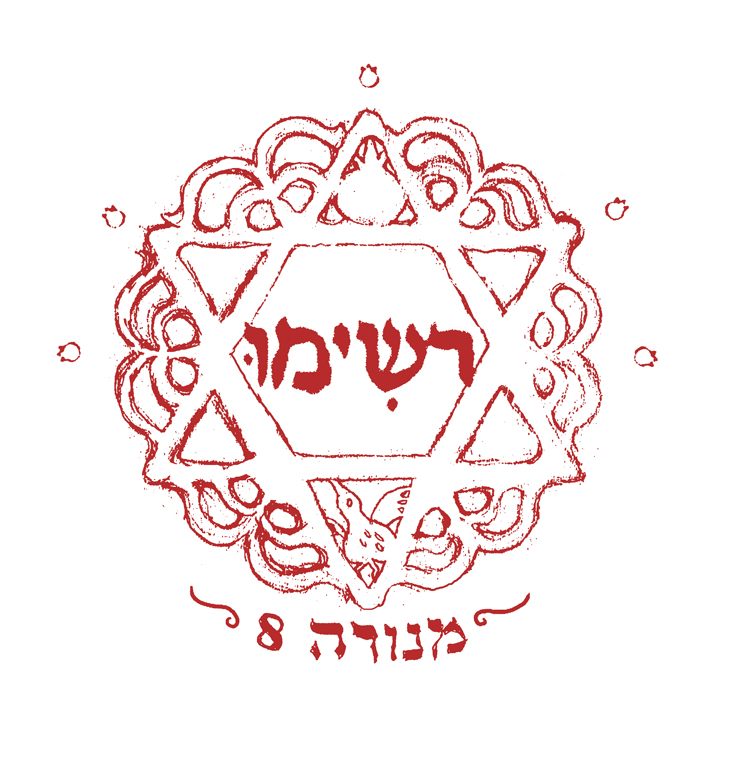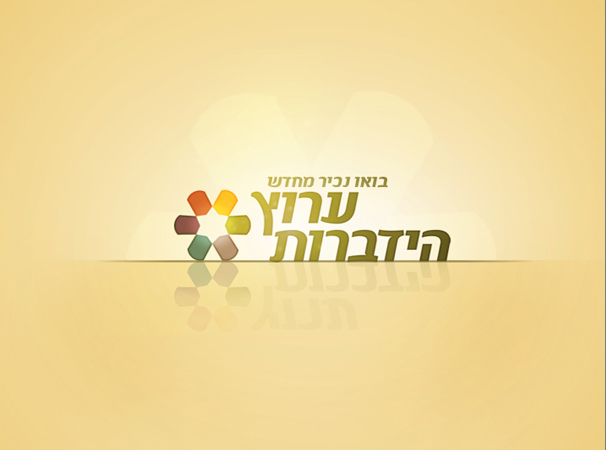For the Woman
From Advertising Glamour to Spiritual Truth: Meirav Bar-Lev’s Journey Back to Judaism
How a top graphic designer left the corporate world, discovered Torah in New York, and created the iconic Hidabroot logo that changed her life
 (Photo: Shutterstock)
(Photo: Shutterstock)“At the beginning of my teshuvah journey, I was working at a large advertising agency, but I felt tremendous emptiness and a deep disgust for the dishonesty of the industry,” says Meirav Bar-Lev, a graphic designer and illustrator. “I knew I needed a change, but I still wasn’t ready to leave the ‘golden cage’ — the generous salary and incredible benefits, for an unknown path.”
At that time Meirav received a job offer from Hidabroot, then a small and emerging organization. “Their TV channel was just starting up, and they needed a full design package. I desperately wanted to work at a place that dealt with genuine, meaningful content. I came from stylish, beautifully designed corporate offices, and suddenly I found myself at a job interview in a tiny apartment in Bnei Brak. The simplicity and density of the place shocked me. I couldn’t imagine myself working there. But at the same time, I knew this was a once-in-a-lifetime opportunity — because if I didn’t leave the hollow world I came from, I might never get out.”
Fifteen years later, the TV graphics she created have already been refreshed and replaced, but the organization’s logo — her design, remains to this day.
“So Successful, Yet So Unhappy”
Meirav was born in Tel Aviv to a family with almost no Jewish background. “I didn’t even know what Kiddush was,” she says. After studying design and illustration, she landed a job at one of Israel’s biggest advertising firms. “We worked with enormous clients like Tnuva and Strauss. The salary and perks were amazing, but I felt horrible. I felt I was wasting my time and talent on meaningless things and collaborating with marketing lies. The emptiness just kept growing.”
Searching for fulfillment, she moved to New York, but instead of inspiration, she found disillusionment. “I saw designers who achieved every professional dream — and were absolutely miserable. People who had everything were still restless and unsatisfied. It felt like a jungle where anything goes if it gets you ahead.”
A neighbor once boasted about how he stole an apartment rental out from under the original tenant while the person was traveling. “It wasn’t illegal,” Meirav says, “but the lack of integrity was shocking.”

A Chance Meeting with Chabad: “I Discovered I Was Ignorant”
Despite the chaos, divine providence guided her: “I met Chabad chassidim in Elul. For the first time in my life, I learned that Rosh Hashanah was more than apples and honey. I was captivated by the depth of Judaism.”
She began attending Torah classes in New York. “Before Shavuot, the rabbi asked what historical event happened on that holiday. No one said ‘Receiving the Torah.’ That’s when I realized how ignorant we all were. My thirst for knowledge exploded.”
Did you consider becoming religious?
“Not at all. I was a Tel Aviv girl with attitude and ego. Teshuvah was not an attractive option. But I enjoyed the shiurim, so I kept going.”
When she returned to Israel, she began attending Rabbi Fanger’s small classes in Tel Aviv. “Only four people came each week, but he traveled all the way to teach us with all his heart. He answered every question, broke down all the assumptions I grew up with, and slowly the barriers fell. My heart already knew where it belonged.”
 (Logo design: Merav Bar-Lev)
(Logo design: Merav Bar-Lev)A Turning Point in Uman
The breakthrough came after a trip to Rabbi Nachman’s gravesite. “Immediately afterward, Hidabroot contacted me. They needed a full TV branding package and asked me to come for an interview. The office — a simple apartment in Bnei Brak, was the opposite of what I was used to.”
During the interview, Rabbi Zamir Cohen entered and said something she never forgot: “In today’s world, the maidservant looks beautiful and gets all the honor. But the daughter of the queen deserves to look beautiful too.”
“That sentence hit me hard. You cannot convey Torah with an unattractive ‘package.’ People who grew up in the world of aesthetics won’t relate to content that looks neglected.” But there was still fear.
 (Design by Merav Bar-Lev, Photo: Michael Leibman)
(Design by Merav Bar-Lev, Photo: Michael Leibman)A Leap of Faith
“Moving to a place without the luxuries I was used to felt like jumping off a cliff. So I gave them my salary demands — identical to my advertising job, hoping they’d say no. But they agreed.”
Meirav took the job. “The adjustment was hard. I was used to luxury restaurants beneath the office. Suddenly the closest thing was kugel,” she laughs. “But designing the TV package and logo felt like a mission.”
Her time at Hidabroot was short — they couldn’t afford her long-term, but it served as her launching pad. She began freelancing for centers of Jewish outreach, musicians like Aharon Razel and Yitzchak Meir, and she has illustrated Rebbetzin Yemima Mizrachi’s annual planner.
Designing the Hidabroot Logo
“We wanted something modern yet timeless. The Magen David at the center reflects Torah as the core, while the colors express richness and diversity within the Jewish people.”
 (Logo design: Merav Bar-Lev)
(Logo design: Merav Bar-Lev)“The Heart Won — And I Came Home”
“I’m grateful every day that I get to use my skills to beautify Torah,” Meirav says. “Now I understand why God sent me to advertising — to learn professional excellence so I could later use it for truth.”
“Materially we have less, but spiritually we have so much more. I strive for simplicity, not deprivation. Beauty still matters to me — but now it's a tool, not a goal.”
Why Judaism? Why Not Eastern Spirituality?
“Growing up, I thought Judaism was dark and narrow. I was a product of media brainwashing. So I explored Eastern philosophies. But they didn’t speak to my soul. Then one day I picked up a siddur and said ‘Shema Yisrael’ — and I burst into tears. Nothing had moved me in years, and suddenly I felt I came home.
“It wasn’t logical — it was the soul recognizing its source. Only later did the mind catch up, once I found intellectual proofs. When both the heart and intellect aligned, I knew I had returned to where I truly belonged.”

